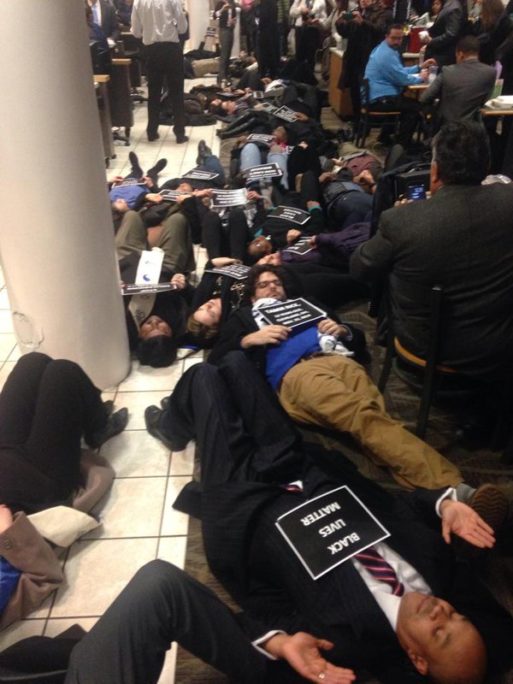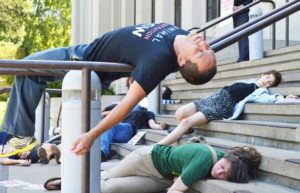Imagine this: You’re out for a walk in your favorite park. As you stroll along, you notice that there are more people about than you’re used to seeing. Suddenly, the woman in front of you keels forward and drops to the ground. As you look around for help, you see more and more people falling and lying deathly still.
You have just witnessed a die-in.

Credit: med.stanford.edu
A die-in is a demonstration in which people lie down as if they are dead. Over the years, this form of protest has been used for many causes, including animal rights, environmental activism, gun control and anti-war protests.
When an organization plans a die-in, they usually have two goals in mind. The first goal is attracting attention to their cause. The appearance of so many people lying still and silent while an announcer explains what the numbers mean is an image that is hard to get out of your head. Some people even report their ideologies shifting after seeing a die-in firsthand.

Credit: dailycal.org
The second goal of holding a die-in is to block traffic on walking paths or on the streets. The bigger the traffic tie up, the better. Die-ins last for a few minutes to an hour or more. Often they end peacefully. However, when the protest goes on for hours or when it blocks traffic on a heavily traveled street or intersection, the police may intervene. Some people care so much about their cause that they would rather be arrested than abandon their posts.
The origins of the die-in are hard to place. Daniel Ross, who wrote an article about die-ins, states that the first signs of the art form occurred in the 1970s, when American college students protested the Cold War, the Vietnam War and the build-up of nuclear arms. Robert Widell, Associate Professor of the University of Rhode Island, dates die-ins to the AIDS epidemic of the 1980s.
Die-ins were a natural response to AIDS because so many people were unaware of the disease that was slowly killing them and their loved ones. The stark images of lifeless bodies splayed out across roads and sidewalks jolted people into the realization that their own lives could be at risk.

Credit: no-nukes.org
Today, new HIV medications are available and people are living with HIV for many years. So HIV-related die-ins are rare. But the protests still occur. In 2007, there was a die-in protest against the War in Iraq that drew hundreds. And the group of activists who have adopted the slogan “Black Lives Matter” have staged die-ins as well.
Many people believe that “art” is a painting or a piece of sculpture. The human body itself, however, can also be a form of art. Even silent and motionless, it can touch the hearts of people who might not give a painting the time of day.

 The Art of the Die-In
The Art of the Die-In


 Our Monthly Tip: Make an “In Case of Death” File to Ease Loved One’s Grief
Our Monthly Tip: Make an “In Case of Death” File to Ease Loved One’s Grief
 Passing of Beloved Comedian Births a New Comedy Festival
Passing of Beloved Comedian Births a New Comedy Festival















